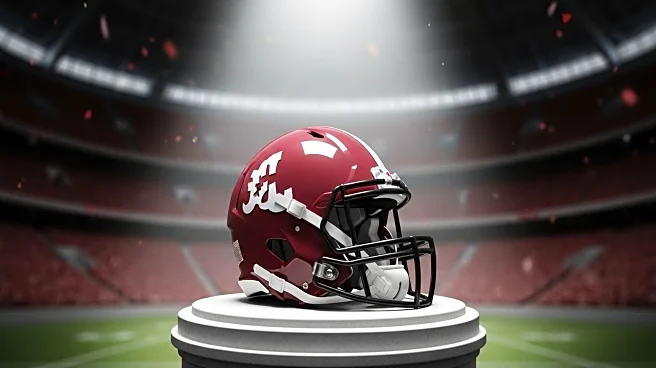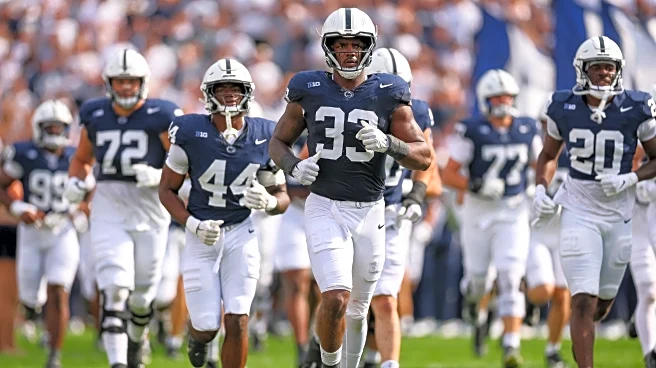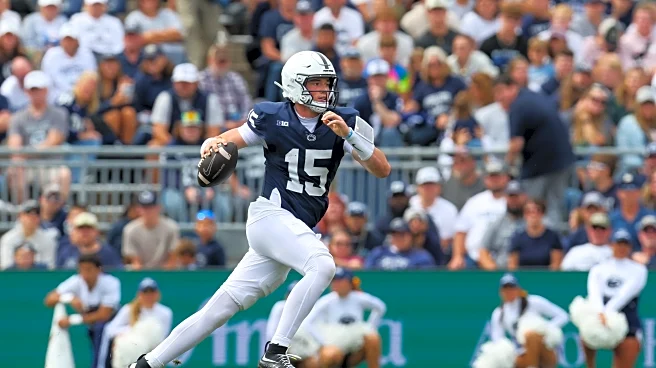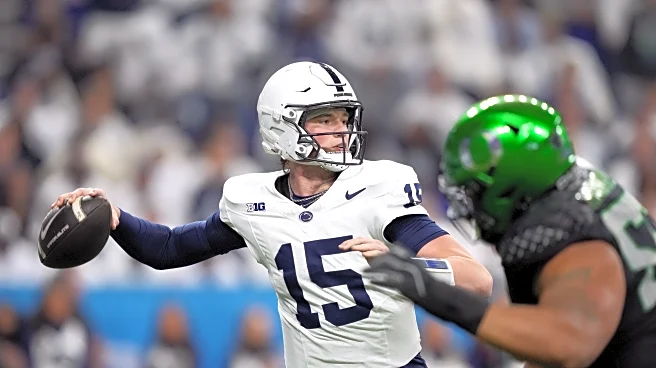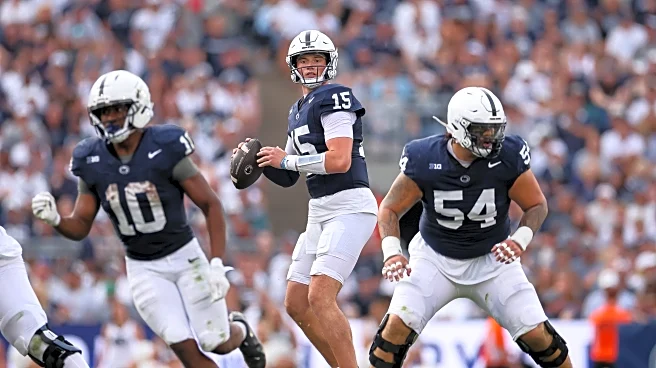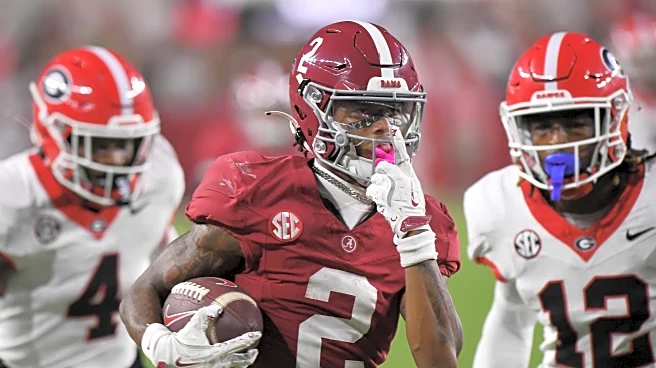What's Happening?
Kadyn Proctor, an offensive lineman for the Alabama Crimson Tide, made headlines with a remarkable 11-yard reception during a game against the Georgia Bulldogs. The play occurred in the second quarter when Alabama was leading 17-14. Proctor, known for his size at six-foot-seven and 366 pounds, caught a screen pass from quarterback Ty Simpson and nearly scored a touchdown. Despite the impressive play, Proctor has faced criticism regarding his NFL prospects, with CBS Sports' Josh Edwards suggesting he might need another year in college to improve his draft stock. Proctor's performance highlighted Alabama's potential when talent is effectively utilized.
Why It's Important?
Proctor's viral play underscores the strategic depth and talent within Alabama's football program. His ability to execute such a play challenges perceptions of his capabilities and highlights the team's potential to leverage its players in unconventional ways. This event also reflects the broader dynamics of college football, where individual performances can significantly impact a player's career trajectory and draft prospects. For Alabama, showcasing such talent reinforces its status as a powerhouse in college football, potentially influencing recruitment and team morale.
What's Next?
The reception may prompt Alabama's coaching staff to explore more creative plays involving Proctor, potentially enhancing his visibility and draft prospects. As conference play intensifies, Proctor's performance will be closely watched, with implications for his decision to enter the NFL draft or return for another college season. Stakeholders, including fans and analysts, will be keen to see how Alabama capitalizes on this momentum in upcoming games.
Beyond the Headlines
Proctor's decision to play for Alabama instead of Iowa highlights the influence of NIL deals and the strategic choices athletes make regarding their careers. His play against Georgia not only impacts his personal trajectory but also serves as a reminder of the shifting landscape in college sports, where financial incentives and program prestige play significant roles in athlete decisions.



